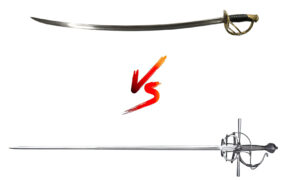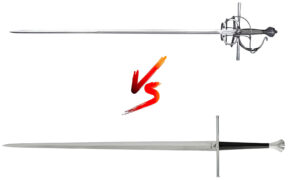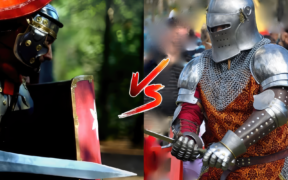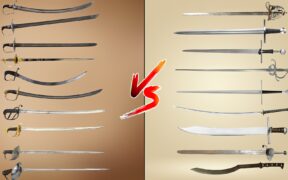Rapier vs Shortsword: What’s Better in a Fight?
NO AI USED This Article has been written and edited by our team with no help of the AI
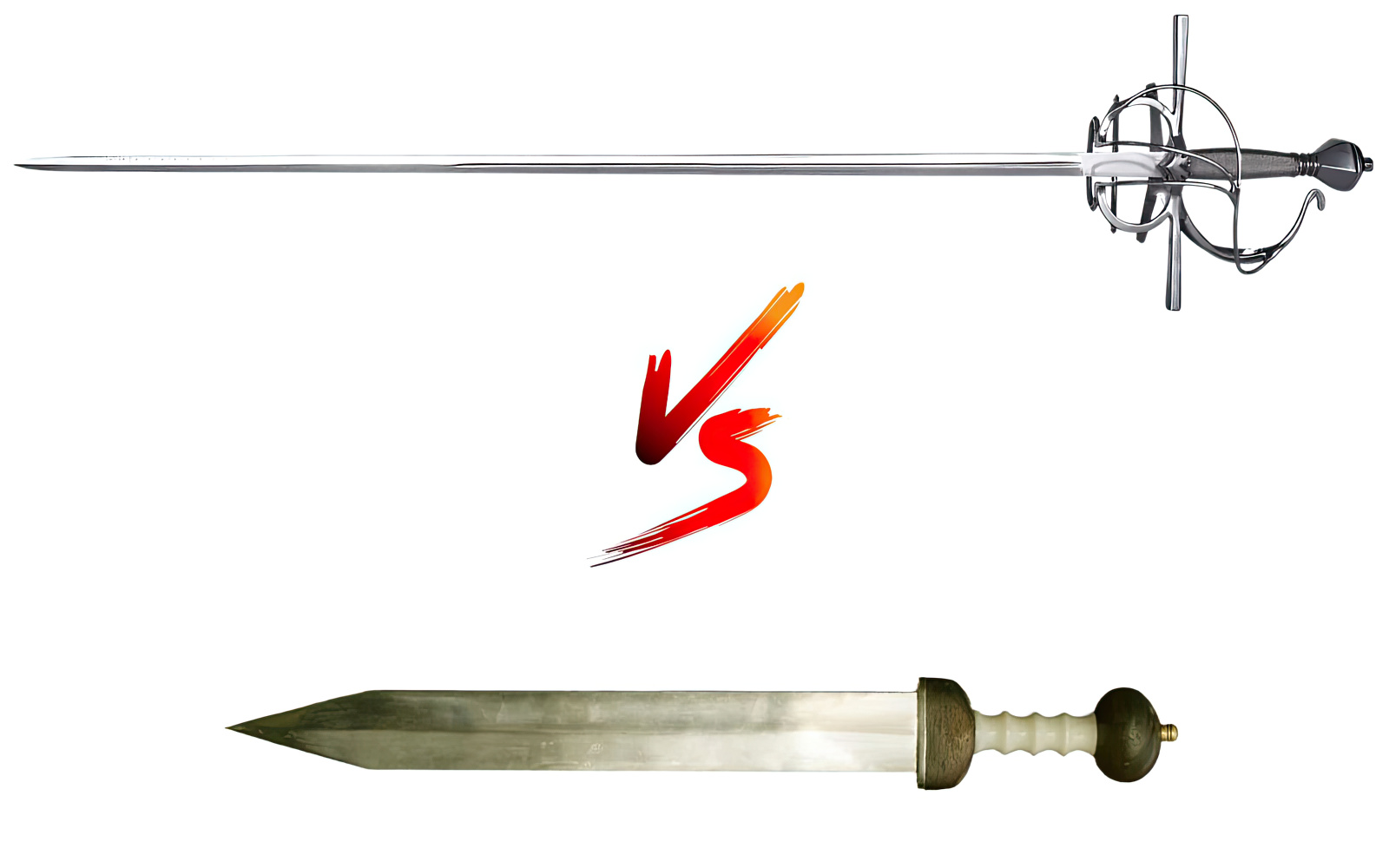
Rapiers and shortswords are blades that excel in their own particular combat styles. The rapier, known for its reach and precision, is regarded as one of the most effective in duels while the shortsword, despite its length, performs very well in close-quarters combat.
Since debates are common on which would be the better weapon, this article discusses both swords, their differences, combat applications, and more.
Rapier & Shortsword Differences Explained
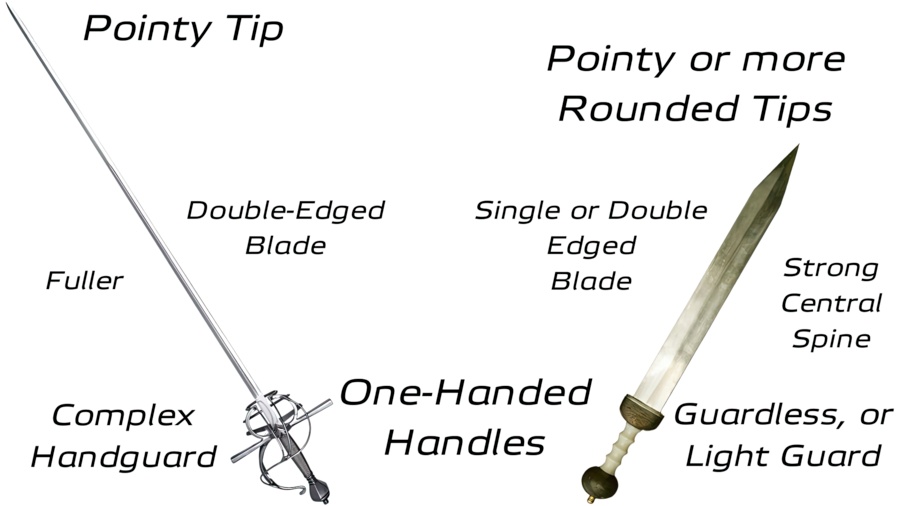
The biggest difference between a rapier and a shortsword is their length. Rapiers usually measure around 43 inches (110 cm), while short swords generally refer to any sword shorter than 24 inches (60 cm).
Designed primarily for thrusting, rapiers have a double-edged, straight blade that tapers to a point along with an unsharpened ricasso and reinforced mid-rib. It typically features a complex hilt, including elements such as a metal basket, cup, finger rings, long crossguard, or the iconic swept hilt style.
On the other hand, shortswords are a broad category and can vary vastly in design. Some are straight and double-edged, like the Roman gladius, while others are single-edged and curved, as seen in the Japanese wakizashi. Since they are often used with a shield or a secondary weapon, they often feature smaller guards or none at all.
Combat Preference and Uses
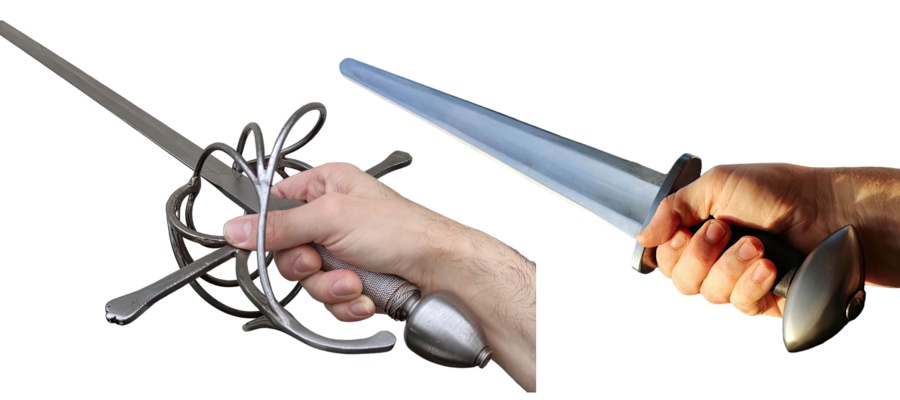
Rapiers and shortswords are both one-handed weapons but differ greatly in combat applications.
Rapiers, with longer, slimmer blades capable of quick, thrusting attacks excel in piercing damage. The rapier capitalizes on its user’s dexterity and finesse, making it effective at keeping foes at a distance. It can also be dual-wielded with another blade.
Meanwhile, shortswords are more practical for close combat. Due to their shorter length, they are easier to carry, conceal, and faster to unsheathe. While it can be wielded independently, combining it with shields or bucklers offers additional protection. Their versatile design makes them a favored backup weapon in battle or formation fighting.
Is Rapier Better than a Shortsword? – Fighting Scenarios
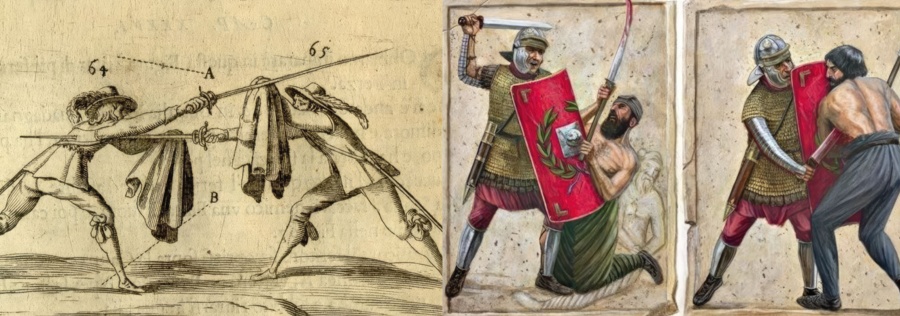
The effectiveness of the rapier and shortsword ultimately depends on the combat scenario. The following are some scenarios where each weapon may be more advantageous:
- Dueling: The rapier is designed for dueling and unarmored combat. Combined with a buckler/shield or an off-hand main gauche dagger, it will almost certainly win in an unarmored duel. If the opponent is armored, the shortsword will have a much better advantage.
- Close Quarters Fight: In a confined space, the shortsword would prove victorious due to the rapier’s length which limits the movements of its wielder.
- Formation Fighting (War): Shortswords are often used in formation combat and shield walls, as seen with the Roman gladius in testudo formations where soldiers fought in tight ranks.
- Surprise & Unexpected: Since shortswords are easier to conceal and unsheathe, they are ideal for ambushes and surprise attacks.
Matt Easton, a sword martial artist and antique arms dealer says, “Short swords are generally at a disadvantage unless there are shields, unless there’s armor, or unless you are in a melee in a confined space, but their massive advantage is accessibility.”
Rapier & Shortswords in Media
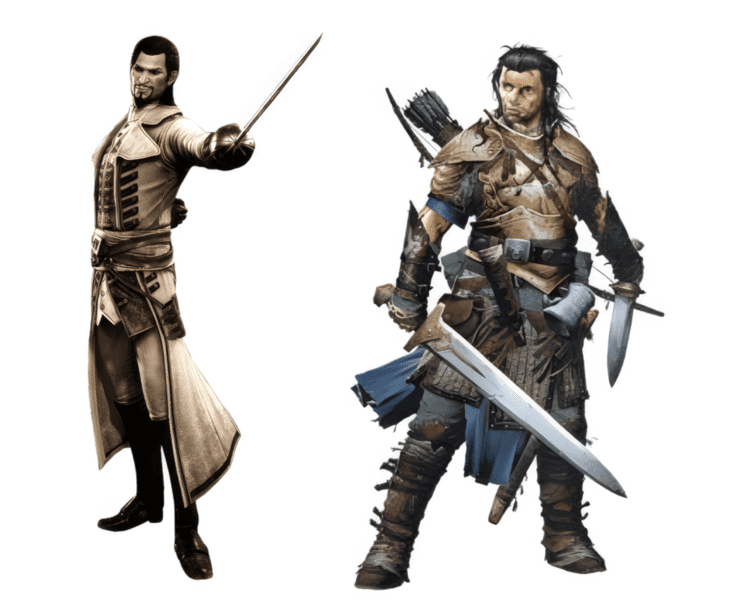
The rapier and shortsword are often featured in media such as anime and video games like Pathfinder and Dungeons and Dragons. In these instances, their depiction is not always historically accurate.
In popular media, rapiers are often incorrectly depicted as cumbersome, slow, heavier weapons that rely on slashing attacks. In reality, the rapier is designed for quick, agile movements and excels in precise thrusting strikes.
Comparatively, shortswords are shown as fast, dual-wielded swords. Although speed and dexterity are definite advantages of shortswords, dual-wielding these blades was not common in history. Instead, they are typically paired with a shield or secondary weapon in battle and formation fighting.
